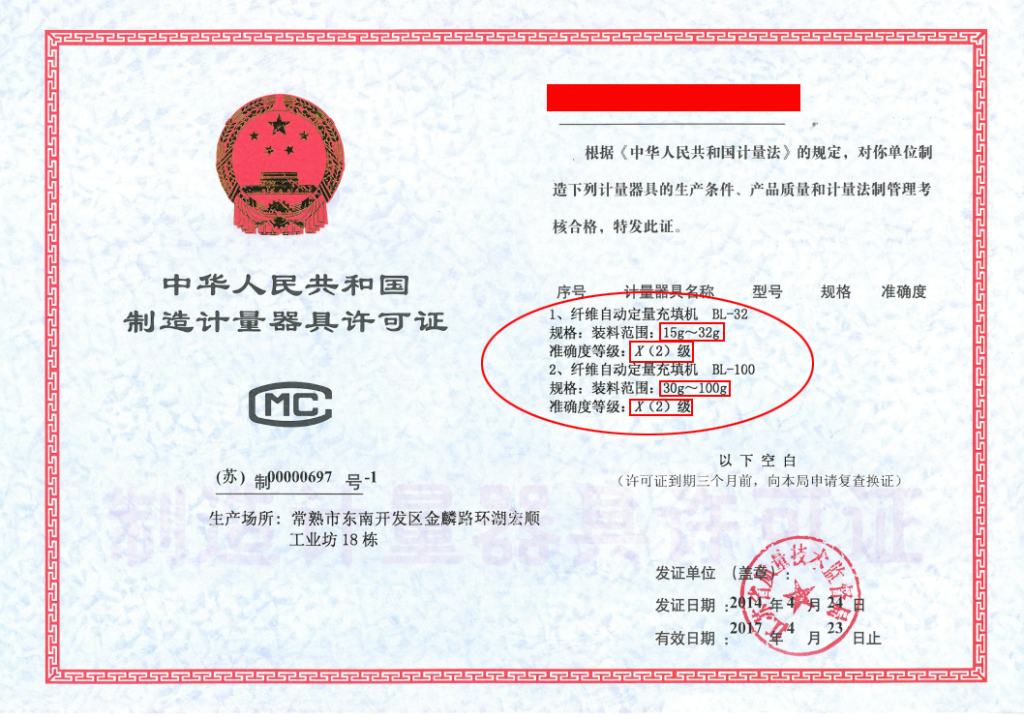Before buying the down jacket machine – the large consumer good, the apparel factory needs to take the following main aspects into consideration: the plant occupancy , the production techniques the factory applies, how skillful the workers’ are at their job, as well as the capacity of the orders the buyers have placed. For a factory, if purchasing the wrong kind of down filling machine that only has a very low quantitative precision due to the purchasers not knowing what the specifications really stand for, the down filling machine wont, of course, fit to the real production .The several months’ efforts for the budgeting and design of the plant is not only a waste of time, but also can lead to serious bad consequences, like orders’ delay and even worse, the loss of potential orders and the current partners.

There are several down filling machine brands in the market currently, which all claim that they have a high quantitative precision. But, whether it is true or not, it needs to be tested. Because the weighing systems of most of the equipment manufacturers are not certified. The operating systems haven’t been optimized, so , saying that their machines possess high quantitative precision is not convincing, no matter from the aspect of stability or authority.
I will talk about how to choose the right down filling machines from following two aspects, only for reference.
- Whether the machine possesses the weighing certificate.
The weighing certificate is an important factor in choosing the right down filling machine. It is the authority proof of the weighing system, which is a key part of the down filling machine. The accuracy class refers to the scaling tools’ class. The scaling tools have to meet certain requirements to guarantee that the accuracy error is controlled within a specific range.
Please have a close look at the following two certificates for the weighing tools manufacturing. In China

(1)

(2)
From the above two certificates, we can see that these two factories are qualified to produce the scaling tools. The two certificates show two different weighing ranges. The first one ranges from 1g—25gs, the accuracy class is x(5), which means that the weighing range is 1g—25g, and actual weight / target weight = 5%, so , the quantitative accuracy is between 0.05g—1.25g.
In the second certificate, we can see that the weighing range of this scaling tool is from 30g—100g, the accuracy class is X(2), which means the accuracy error rate is 2 % , that is to say that the accuracy error is from 0.6g –2g when weighing 30g—100g.
From the comparison, we can get the conclusion that the higher Accuracy Class might have a higher accuracy error. One thing needs to be highlighted here is that the Accuracy Class only works when the target weight is within the weighing range written in the certificate. The apparel manufacturers need to be aware of the difference and choose the right down filling machine for their production carefully and accordingly.
- System Optimization
In the fields of science, engineering, industry and statistics, the accuracy of a measurement system is the degree of closeness of measurements of a quantity to that quantity’s actual (true) value. The precision of a measurement system, also called reproducibility or repeatability, is the degree to which repeated measurements under unchanged conditions show the same results. Although the two words reproducibility and repeatability can be synonymous in colloquial use, they are deliberately contrasted in the context of the scientific method.
A measurement system can be accurate but not precise, precise but not accurate, neither, or both. For example, if an experiment contains a systematic error, then increasing the sample size generally increases precision but does not improve accuracy. The end result would be a consistent yet inaccurate string of results from the flawed experiment. Eliminating the systematic error improves accuracy but does not change precision.
A measurement system is designated valid if it is both accurate and precise. Related terms include bias (non-random or directed effects caused by a factor or factors unrelated to the independent variable) and error (random variability).

From the definition above we can see that the weighing error includes random error and systematic error. The random error refers to the weighing result that is random without a regulation when tested under the same conditions for various times. While the system error shows that the weighing error is either large or small when tested under the same conditions repeatedly. The main factors for the system error: 1) The defects in the weighing theory or weighing method;2) The error that the weighing tools carry with themselves; 3) The weighing error resulted from the improper experiment operation due to the tester’ s restrictions both mentally & physically.
I would like to illustrate the relationship among the measurement precision, accuracy and exactness by taking the operation of the down filling machine for an example. The down filling machine caries system errors itself (The error that the weighing tools carry with themselves ) such as the static electricity generated due to long-time operation, the unstable speed of the motor , and so forth. If the down filling machine itself doesn’t carry any system errors, the filling results mainly depend on the worker, the weighing system’s systematic error and the random error. As the machine is automated, the human factor is slight. 98 % of the errors are due to the machine’s operating system. If not enough factors affecting the output of the down are taken into consideration, the random errors will play a bigger role, so the measurement precision will be lower, which means the actual weight wont match the target weight. To solve this problem, more factors affecting the output of the down should be taken into consideration. Based on the analysis in the paragraph, we come to the conclusion that if the machine wants to reach a high measurement exactness, first of all, the systematic error of the down filling machine itself should be controlled effectively, the same as are the operating systematic errors and random errors. The human factor of the operating systematic error ( improper machine operation.). That is to say, both the precision and accuracy count a lot for the measurement precision.
From the error theory, we come to the conclusion that the random error will have the tendency to be zero if countless tests are carried out ,while the measurement accuracy is totally depended on the systematic error. So, the degree of the systematic error reflects the measurement accuracy that can be reached when testing. So, the key to keep the high accuracy in during long-time machine operation is reduce the systematic error. ( By taking all the factors affecting the accuracy into considerations when design the machine.) , Apply the Correction , and steadily improve the accuracy through tests. The easiest way to tell whether a down filling machine can work with high accuracy continuously is to find out whether its operating system is using the Automatic Correction Function.
XIDO Fully Automatic Down Filling Machine possesses the continuous correction function , and the automatic correction functions well, which guarantees the accuracy for every single filling.
Hope the above two suggestions are helpful to your decision-making when buying the down filling machine.
If you have any needs in garment producing, we are the one.
Any Questions Are Welcome!
Whatsapp:0086 18053208561
Email:[email protected]
You can also visit our website:www.xidomachine.com
My personal down stuffing machine blog:www.suninian.com

Leave a Reply